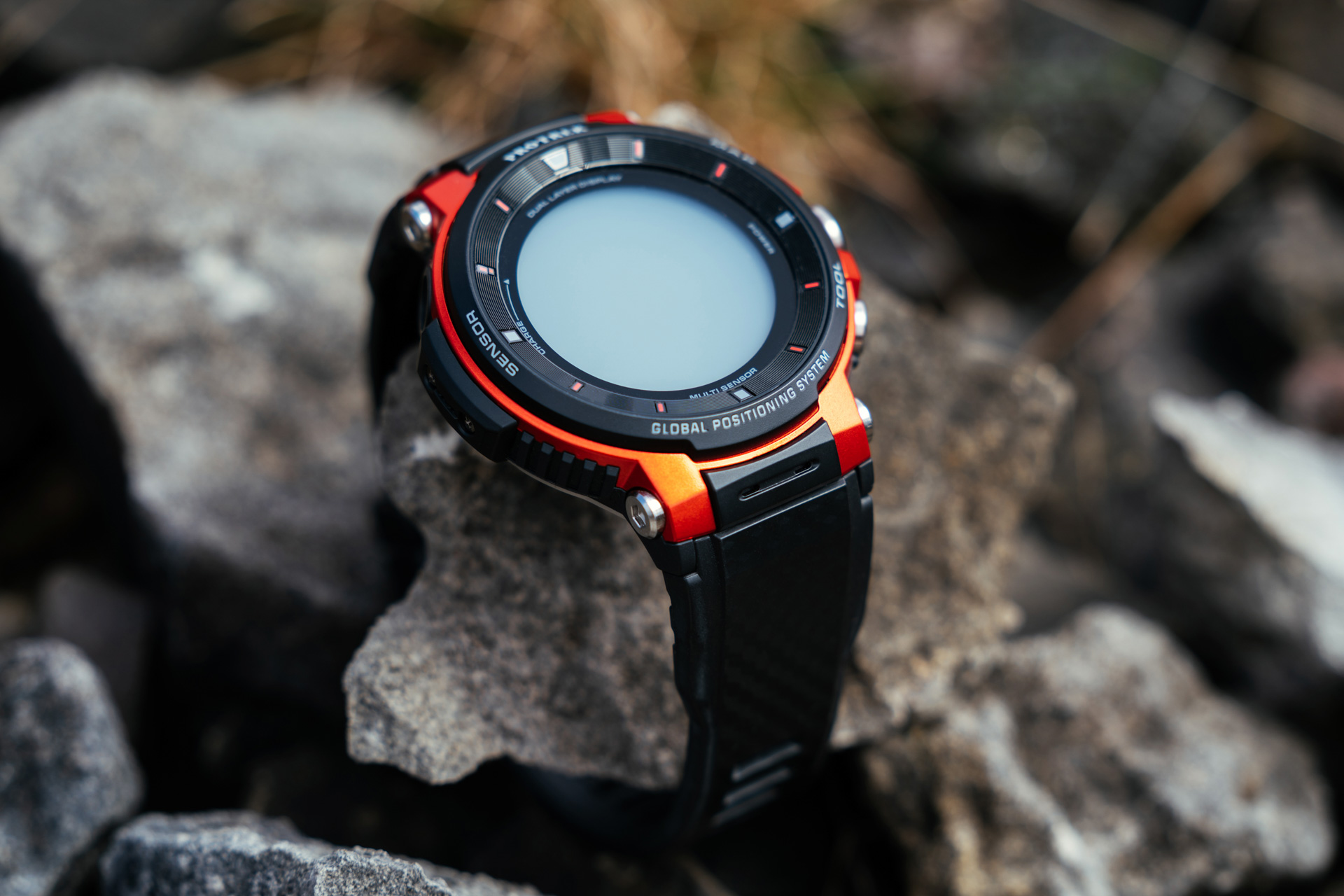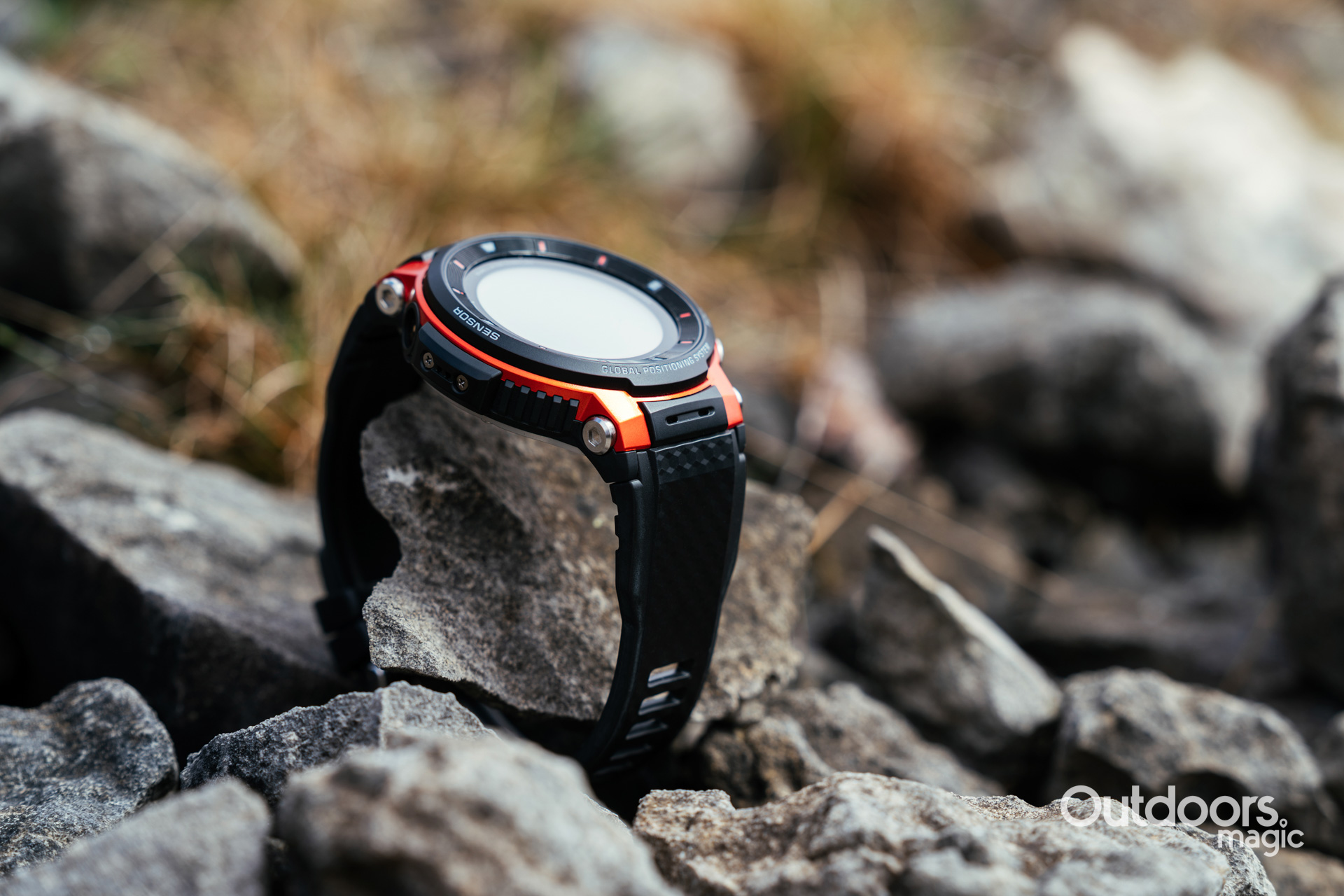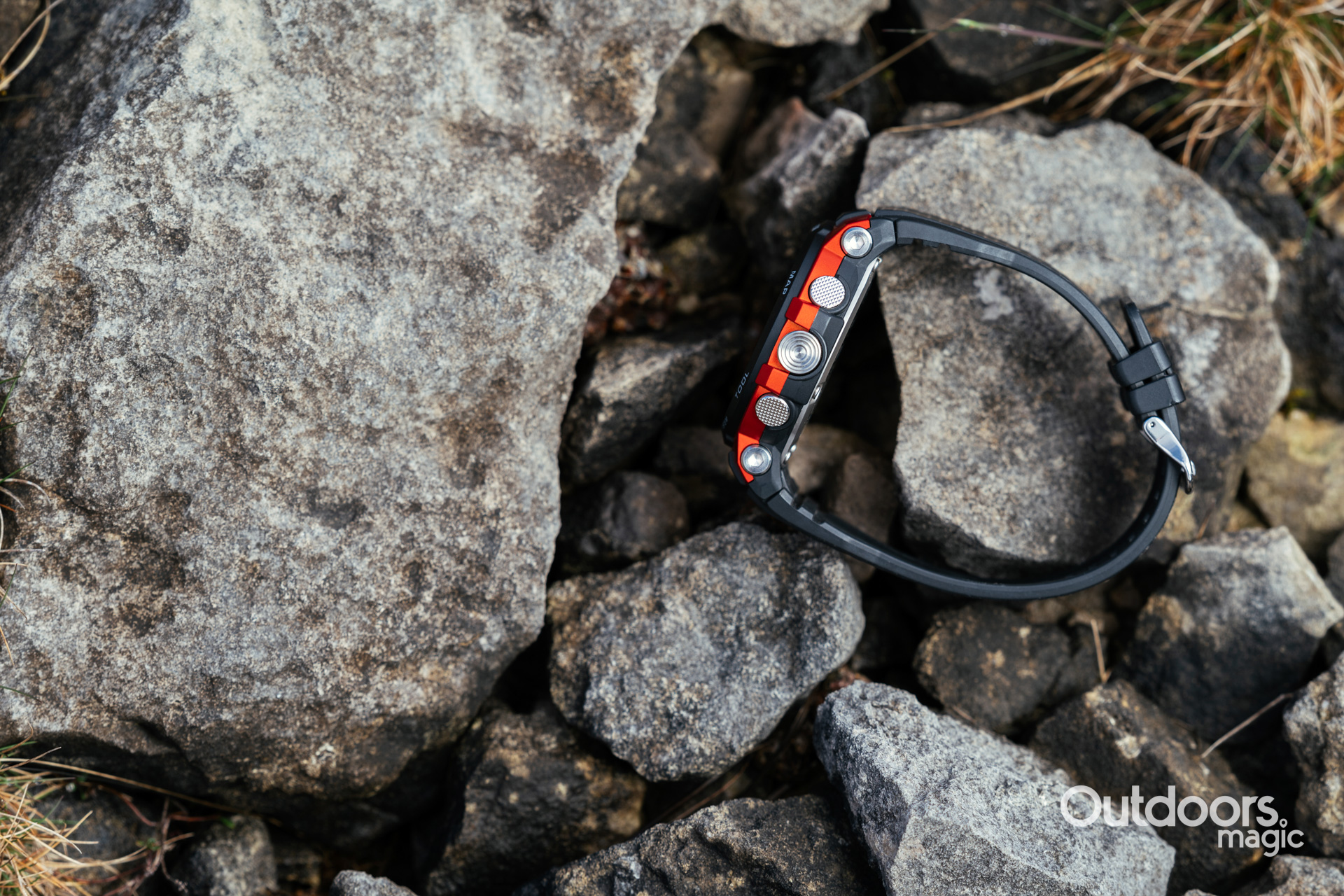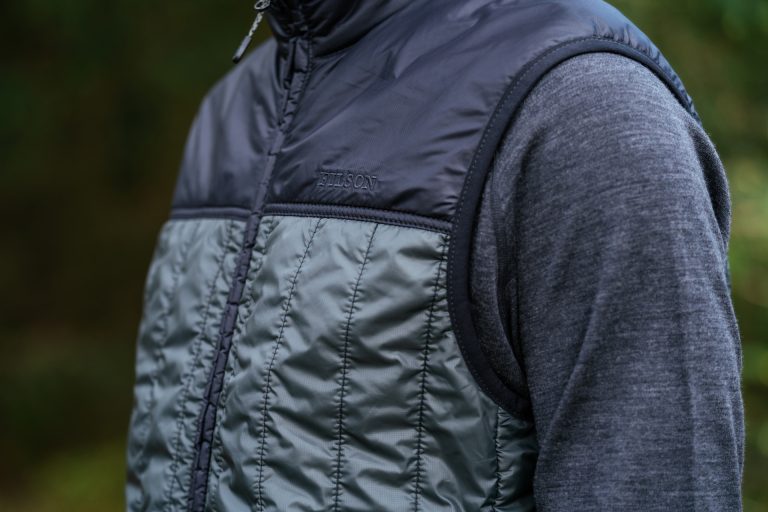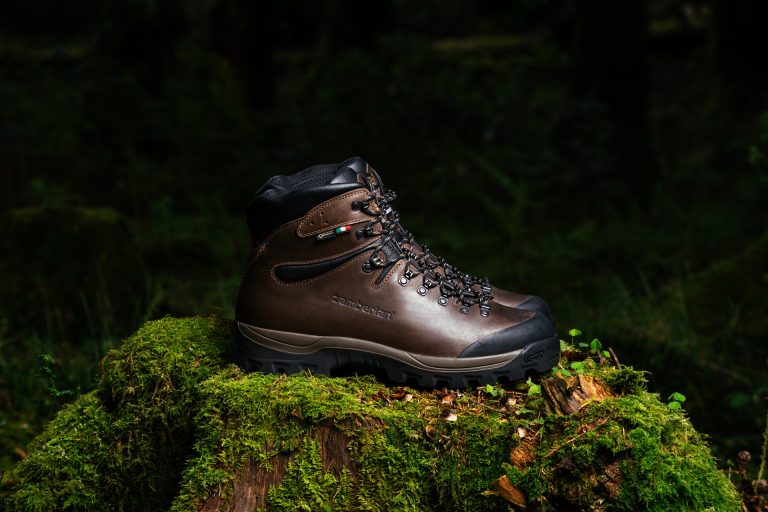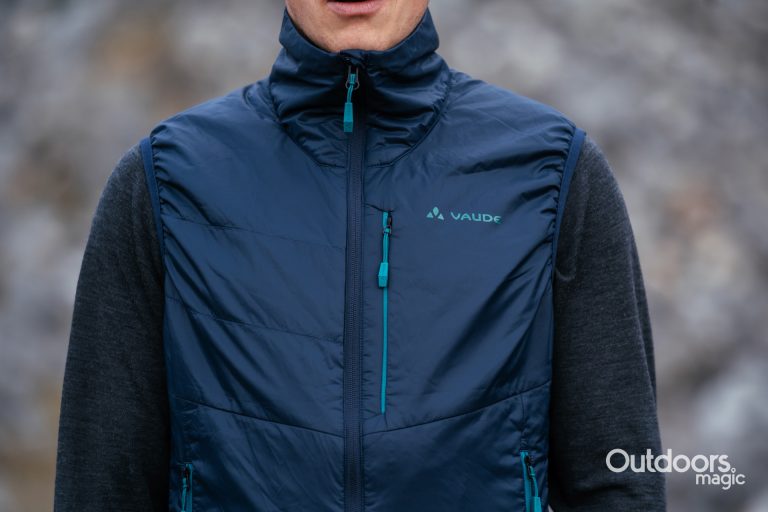Why We Chose It: Made for hikers, durable, precise GPS.
Here’s a smartwatch that, as the name suggests, is made specifically for us hikers. It’s aimed at providing a tool for the trekker to help them navigate, understand the conditions they’re about to face and, well, to know the time.
We’ve already seen two previous iterations of it now and we liked both, particularly the ProTrek F20 which made it into the last version of this Outdoor100 product guide. One of the main drawbacks, however, is that the previous models were a little bit chunky – a bit too eye catching for our taste. And so, we were pleased to see that with this latest version, they’ve trimmed it down and made it generally sleeker in its appearance, with 4mm taken off the diameter of the casing.
“You can certainly count on this being durable enough for sustained mountain use”
It also now features the most recent version of Google’s Wear OS, which at the moment can only be found in a handful of smartwatches.
Looking at this from the perspective of an outdoor enthusiast, you can certainly count on this being durable enough for sustained mountain use. Casio say it has passed US military standards for vibrations, shocks, and extreme temperatures, and it’s also waterproof to 50 meters. It has a touch screen and also three buttons which are just about glove-friendly.

As for the performance of its navigation function, it’s not bad. As you’d expect, it comes with pre-loaded Google mapping as well as MapBox which presents OpenStreetMap in a way that is easy to interpret in terms of terrain variation. You can switch easily between Google Maps and this view and it’s possible to download and save maps for offline use which is very useful if you want to save the battery life. The Pro Trek WSD-F30 also provides you with a compass, altimeter, air pressure reading, tide times and a screen that shows the sunrise and sunset times.
In terms of battery life, unfortunately Casio haven’t come along and solved the issue that all smartwatches have in this regard, well not quite anyway, but they have introduced something rather useful. What we’re referring to are the three operating levels that you can select between, as well as the dual screens (a monochrome one and a colour one layered on top of each other).
On the normal, everyday mode where you’re using a number of different settings – say, your phone notifications are synched and you’re checking your location every now and then – you’ll get a day and a bit out of this. The other extreme is a totally limited version, where you only see the monochrome screen and just get time and altitude. With this you’ll get an admirable 30 days of juice.

